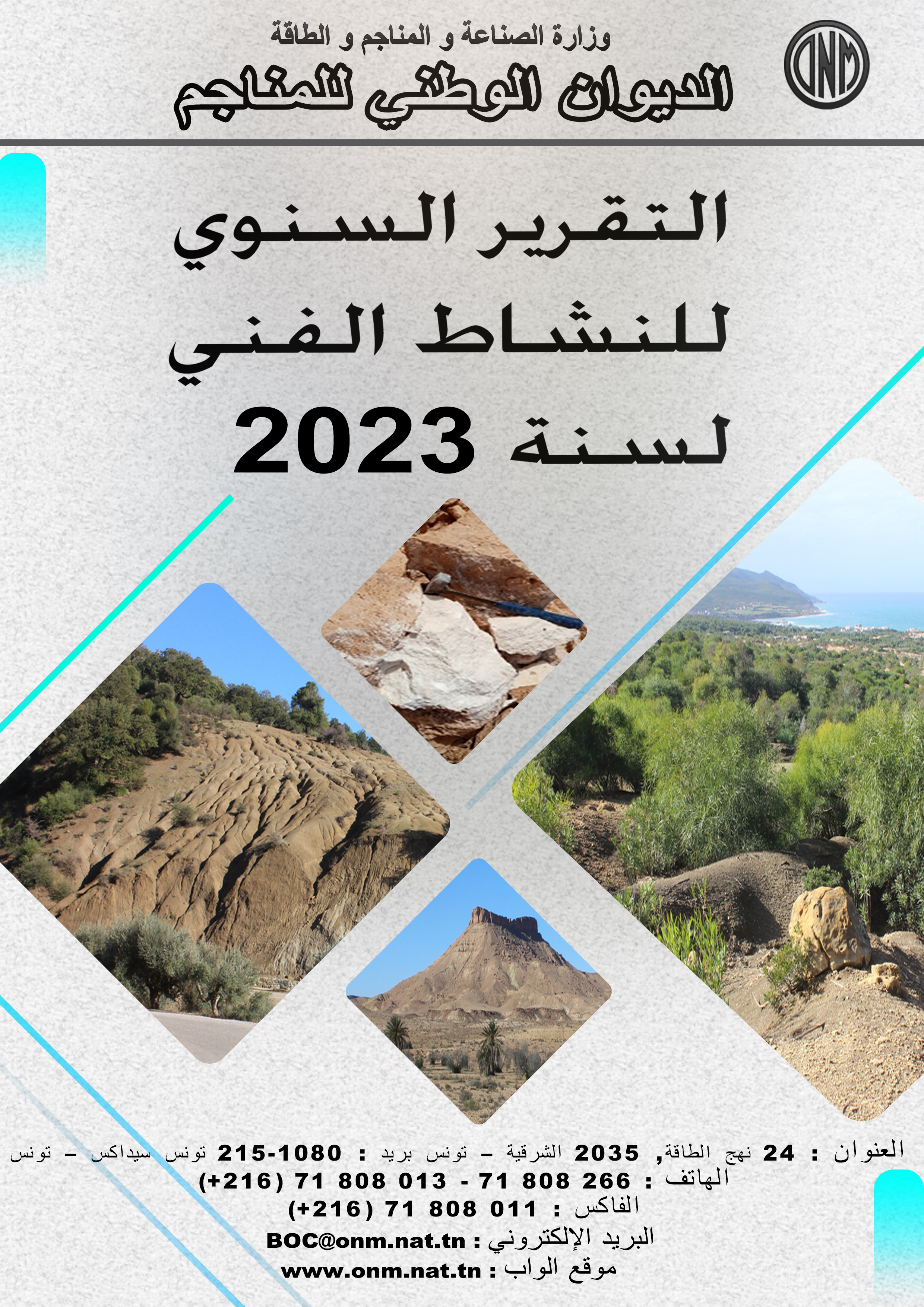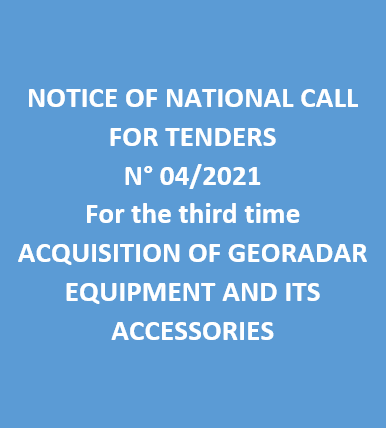| Annual program and technical progress report |
-

Activity Report 2023
-

Technical Program 2024
|
| Geocatalogue |

|
| Invitation to
tender |
-

REALIZATION OF THE TRAINING PLAN FOR THE YEAR 2022
-

ACQUISITION OF TWO SERVICE CARS
-

ACQUISITION OF GEORADAR EQUIPMENT AND ITS ACCESSORIES
|
|
Invest in Tunisia |

|
|
|
|
|
::
Documentation and Editions
>>
Research library
|
| |
|
[
Search by author
]
[
Search keyword
]
[
Search by index
]
[
Search by category
]
|
title of the reference :
|
Predictive evaluation of lower-middle Turonian Carbonate reservoir in Central Tunisia through integration of deposition environment and diagenesis.
|
|
Publication Date:
|
2000
|
|
Author :
|
Troudi Habib, Negra Mohamed Hédi, M'rabet Ali
|
|
Catalogue type :
|
Livre
|
|
Catalogue reference :
|
N°40 (TUN) Ann. Mines Géol. N°40 Predictive evaluation of lower-middle Turonian Carbonate reservoir in Central Tunisia through integration of deposition environment and diagenesis. The Lower-Middle Turonian Bireno carbonates member is hydrocarbon bearing in several wells in East-Central Tunisia. Based on outcrops and subsurface data, sedimentological and diagenetic properties of this reservoir are analysed and discussed. In Central Tunisia, the Bireno member is subdivided into two lithologic units separated by a regional sedimentary unconformity nearly 92 millions years old. According to the sedimentary characteristics, the Bireno member indicates the development of progradational and then aggradational carbonate plateform. This platform was affected by distensive Turonien tectonism which, at least partly, was responsible of lateral facies changes. Detailed petrographic studies of these carbonates allowed inferring the reconstruction of the diagenetic sequence. The latter included micritization, cementation, dolomitization and dissolution. The early diagenesis evidence is represented by micritized peripheral areas of bioclasts and micritized peloids, isopacheous fine-textured calcite and fibrous calcite in multiple layers around grains. This cement occludes primary intergranular pore spaces. Both processes are interpreted to have occured in a marine phreatic environment. In addition, several phases of dolomitization-dissolution can be differentiated during a shallow burial environmental. The Lower-Middle Turonien platform carbonates in Central Tunisia displays good primary porosity during the course of burial, high secondary porosity related to dedolomitization appeared. However, a major part of porosity was produced when the reservoir was fractured during the atlasic tectonic events.
pétrographie ; carbonate ; Turonien ; lithostratigraphie ; diagenèse ; crétacé supérieur ; paléogéographie ; pétrole ; roche mère hydrocarbure ; dolomitisation ; modèle trois dimensions ; Tunisie ; Tunisie Centrale ; Kasserine ; J. Semmama ; Axe N-S ; J. Ben Younes ; Kalaat Senan Troudi Habib Negra Mohamed Hédi M'rabet Ali Roches sédimentaires
|
|
Indexation decimale :
|
Roches sédimentaires
|
|
Keywords :
|
pétrographie ; carbonate ; Turonien ; lithostratigraphie ; diagenèse ; crétacé supérieur ; paléogéographie ; pétrole ; roche mère hydrocarbure ; dolomitisation ; modèle trois dimensions ; Tunisie ; Tunisie Centrale ; Kasserine ; J. Semmama ; Axe N-S ; J. Ben Younes ; Kalaat Senan
|
|
Summary :
|
The Lower-Middle Turonian Bireno carbonates member is hydrocarbon bearing in several wells in East-Central Tunisia. Based on outcrops and subsurface data, sedimentological and diagenetic properties of this reservoir are analysed and discussed. In Central Tunisia, the Bireno member is subdivided into two lithologic units separated by a regional sedimentary unconformity nearly 92 millions years old. According to the sedimentary characteristics, the Bireno member indicates the development of progradational and then aggradational carbonate plateform. This platform was affected by distensive Turonien tectonism which, at least partly, was responsible of lateral facies changes. Detailed petrographic studies of these carbonates allowed inferring the reconstruction of the diagenetic sequence. The latter included micritization, cementation, dolomitization and dissolution. The early diagenesis evidence is represented by micritized peripheral areas of bioclasts and micritized peloids, isopacheous fine-textured calcite and fibrous calcite in multiple layers around grains. This cement occludes primary intergranular pore spaces. Both processes are interpreted to have occured in a marine phreatic environment. In addition, several phases of dolomitization-dissolution can be differentiated during a shallow burial environmental. The Lower-Middle Turonien platform carbonates in Central Tunisia displays good primary porosity during the course of burial, high secondary porosity related to dedolomitization appeared. However, a major part of porosity was produced when the reservoir was fractured during the atlasic tectonic events.
|
|
Exemplaries :
|
-
|
|
|
|
|
|
|
|



